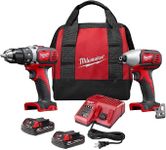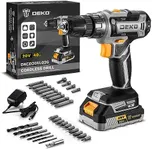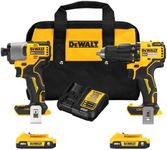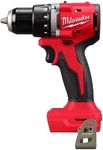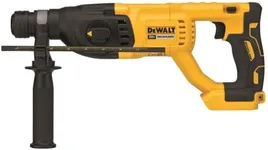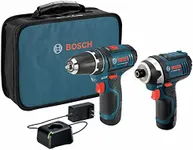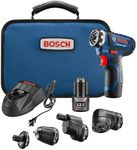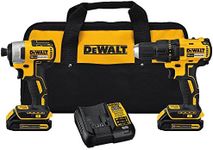Buying Guide for the Best Cordless Drills
Choosing the right cordless drill can make your DIY projects, repairs, or professional work much easier and more efficient. The best drill for you depends on what tasks you plan to tackle, how often you'll use it, and your comfort with handling power tools. Understanding the main features and specifications will help you find a drill that matches your needs and feels good in your hands.VoltageVoltage refers to the power output of the drill's battery and is a key indicator of how much force the drill can deliver. Higher voltage means more power, which is useful for tougher jobs like drilling into masonry or thick wood. Cordless drills typically range from 12V to 20V. Lower voltages (around 12V) are lighter and suitable for light tasks like assembling furniture or hanging pictures. Mid-range (14V-18V) offers a balance of power and weight, making them versatile for most home projects. Higher voltages (20V and above) are heavier but provide the strength needed for demanding tasks. Choose the voltage based on the toughest job you expect to do regularly.
Battery Type and Capacity (Ah)Most modern cordless drills use lithium-ion batteries, which are lighter, charge faster, and last longer than older types. The capacity of the battery is measured in amp-hours (Ah), which tells you how long the drill can run before needing a recharge. Lower capacities (1.5Ah-2.0Ah) are fine for occasional use or short tasks, while higher capacities (3.0Ah and above) are better for longer or more frequent use. If you plan to use your drill for extended periods, look for a higher Ah rating or consider getting a spare battery.
Chuck SizeThe chuck is the part of the drill that holds the bit. Common sizes are 3/8-inch and 1/2-inch. A 3/8-inch chuck is suitable for most household tasks and can handle a wide range of drill bits. A 1/2-inch chuck is more robust and can accept larger bits, which is useful for heavy-duty work. If you expect to use your drill for bigger projects or with larger bits, go for the 1/2-inch chuck; otherwise, 3/8-inch is usually sufficient.
Speed and Torque SettingsSpeed is measured in revolutions per minute (RPM), and torque is the twisting force the drill can apply. Many drills offer variable speed and adjustable torque settings, which let you control how fast and how hard the drill works. Lower speeds and higher torque are good for driving screws, while higher speeds are better for drilling holes. If you want flexibility for different tasks, look for a drill with multiple speed and torque settings. This way, you can adjust the tool to match the job, whether it's delicate work or heavy drilling.
Weight and ErgonomicsThe weight and feel of the drill are important, especially if you'll be using it for long periods or in awkward positions. Lighter drills are easier to handle and reduce fatigue, but may have less power. Ergonomic features like a comfortable grip, balanced design, and easy-to-reach controls make the drill more pleasant to use. Try to pick a drill that feels comfortable in your hand and isn't too heavy for you to use confidently.
Additional FeaturesSome cordless drills come with extra features like built-in LED lights, belt clips, or quick-change chucks. While not essential, these can make your work easier and more convenient. Think about which features would be genuinely helpful for your typical projects and choose a drill that includes them if they matter to you.
